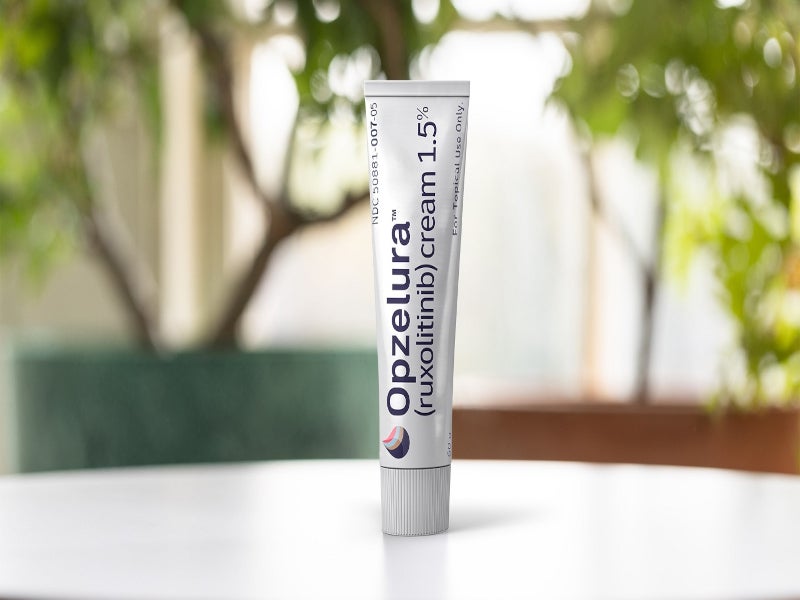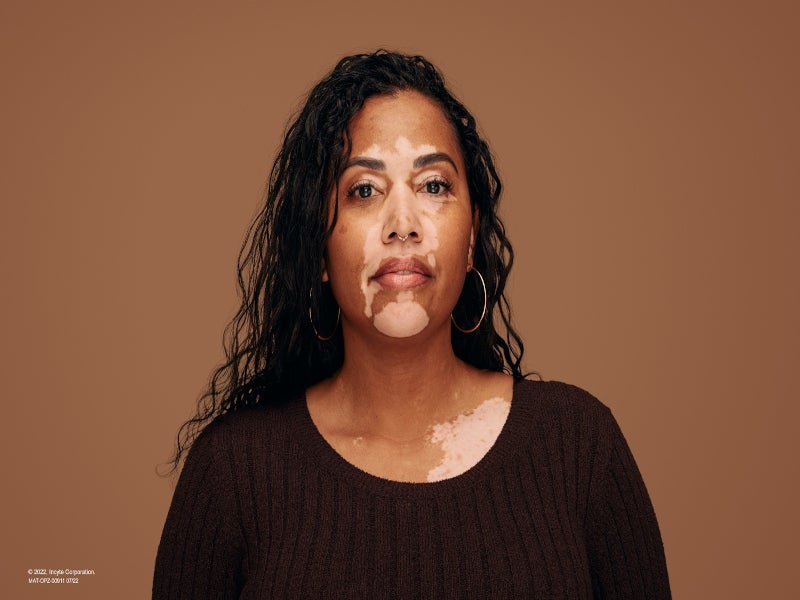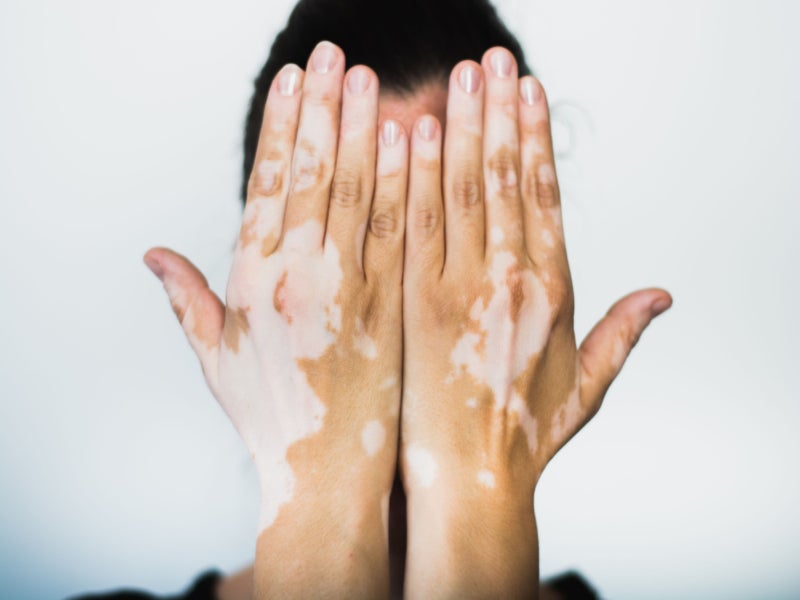Opzelura (ruxolitinib) is a Janus kinase (JAK) inhibitor developed by the US-based biopharmaceutical company Incyte. The inhibitor is used for the treatment of nonsegmental vitiligo and the short-term and non-continuous chronic treatment of mild to moderate atopic dermatitis (AD) in adults and paediatric patients aged 12-years and older.
Opzelura is the only topical JAK inhibitor formulation approved in the US.
Opzelura (ruxolitinib) is marketed as a white to off-white oil-in-water, solubilised emulsion cream containing 15mg of ruxolitinib per gram of cream for topical use.
Regulatory approvals for Opzelura
Opzelura received its first US FDA approval in September 2021 for topical short-term and non-continuous chronic treatment of mild to moderate AD in non-immunocompromised patients whose disease was not adequately controlled with topical prescription therapies.
The European Medicines Agency (EMA) validated the marketing authorisation application (MAA) for ruxolitinib cream as a potential treatment of nonsegmental vitiligo in adolescents and adults in October 2021.
In December 2021, the FDA accepted a supplemental new drug application for Opzelura cream for priority review for the treatment of vitiligo. The FDA approved the cream for the condition in July 2022.
The EMA’s Committee for Medicinal Products for Human Use (CHMP) recommended the drug for approval in Europe in February 2023.
Nonsegmental vitiligo causes and symptoms
Vitiligo is a chronic, autoimmune condition characterised by skin depigmentation and the formation of white patches on the face and body. The white patches can appear on any body part, such as hands, feet, arms, face, hair, scalp, eyebrows, lashes, beard and mucus membrane inside the nose and mouth.
It is caused when the immune system attacks and destroys the pigment-producing cells, melanocytes.
The skin condition is classified into two major types, segmental and nonsegmental vitiligo. Nonsegmental vitiligo is more common than segmental vitiligo and generally appears symmetrically on both sides of the body.
Segmental vitiligo generally appears on only one side of the body and accounts for 5% to 16% of total vitiligo cases.
Vitiligo is estimated to impact between two and three million individuals worldwide, with nonsegmental vitiligo accounting for approximately 85% of the individuals.
Opzelura’s mechanism of action
Opzelura is a typical JAK inhibitor that binds to JAK1 and JAK2 enzymes, involved in the signalling of a variety of cytokines and growth factors essential in haematopoiesis and immunological function. The binding results in the inhibition of IFN-γ-mediated JAK-signal transducers and activators of transcription (STAT) signalling, a key driver of depigmentation in vitiligo.
The inhibition is believed to reduce CD8+ T cell-mediated destruction of melanocytes, allowing a more stable environment for the return of melanocytes over time.
Clinical trials on Opzelura
The FDA approval of Opzelura was based on the positive outcomes of the pivotal Phase III TRuE-V clinical trial programme, including TRuE-V1 and TRuE-V2 clinical studies.
The vehicle-controlled studies of Opzelura were double-blind, randomised, and of identical design to assess the cream’s safety compared to a non-medicated (vehicle) cream in more than 600 patients with nonsegmental vitiligo aged 12 and older.
In both studies, the patients were randomised at a 2:1 ratio to be treated with either Opzelura or vehicle cream twice daily for 24 weeks, followed by an additional 28 weeks.
The primary efficacy endpoint was the percentage of individuals who improved their vitiligo area scoring index (VASI) scores, which would indicate improvements in facial and total body repigmentation at week 24 compared to vehicle cream and in an open-label extension at week 52.
The facial (F)-VASI was used to evaluate lesions on the face while the total body (T)-VASI evaluated lesions on the body (including the face).
Results were consistent across both studies with approximately 30% of patients treated with Opzelura achieving at least 75% improvement in their F-VASI score (F-VASI75) at week 24, compared to approximately 8% and 13% of patients treated with the vehicle in TRuE-V1 and TRuE-V2, respectively.
Approximately 50% of patients treated with Opzelura achieved F-VASI75 at week 52.
The results demonstrated improvements in facial and total body repigmentation with Opzelura. The 52-week data also showed continued improvements in repigmentation with a longer duration of treatment with Opzelura.
The most common adverse reactions observed in patients treated with Opzelura were common colds, headaches, fevers, urinary tract infections, acne, itching, and redness at the application site.






